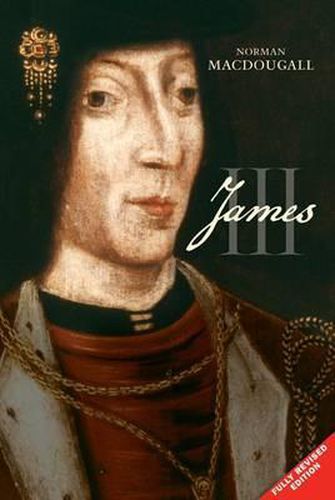Readings Newsletter
Become a Readings Member to make your shopping experience even easier.
Sign in or sign up for free!
You’re not far away from qualifying for FREE standard shipping within Australia
You’ve qualified for FREE standard shipping within Australia
The cart is loading…






James III is the most enigmatic of the Stewart kings of Scotland. Variously characterised as artistic, peace-loving, morbidly suspicious, treacherous, pious, lecherous and lazy, King James was much criticised by contemporaries and later chroniclers for his failure to do his job in the manner expected of him, and particularly for his reliance on low-born favourites to the exclusion of his ‘natural’ counsellors, the nobility. Specific complaints included debasement of the coinage, royal hoarding of money, failure to staunch feuds and to enforce criminal justice.
Yet James III has also been seen as a major patron of the arts, as Scotland’s first Renaissance king, and as the architect of an intelligent and forward-looking foreign policy. In this new study, the author explores all these areas and seeks to explain why King James was challenged by a huge rebellion in 1482, which he narrowly survived, and why he succumbed to a further rising in 1488, which placed his eldest son on the throne as James IV.
$9.00 standard shipping within Australia
FREE standard shipping within Australia for orders over $100.00
Express & International shipping calculated at checkout
James III is the most enigmatic of the Stewart kings of Scotland. Variously characterised as artistic, peace-loving, morbidly suspicious, treacherous, pious, lecherous and lazy, King James was much criticised by contemporaries and later chroniclers for his failure to do his job in the manner expected of him, and particularly for his reliance on low-born favourites to the exclusion of his ‘natural’ counsellors, the nobility. Specific complaints included debasement of the coinage, royal hoarding of money, failure to staunch feuds and to enforce criminal justice.
Yet James III has also been seen as a major patron of the arts, as Scotland’s first Renaissance king, and as the architect of an intelligent and forward-looking foreign policy. In this new study, the author explores all these areas and seeks to explain why King James was challenged by a huge rebellion in 1482, which he narrowly survived, and why he succumbed to a further rising in 1488, which placed his eldest son on the throne as James IV.